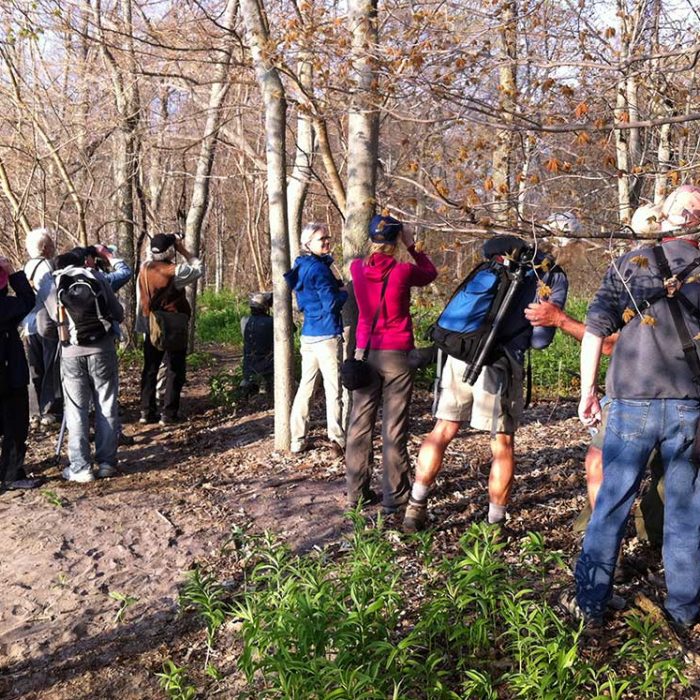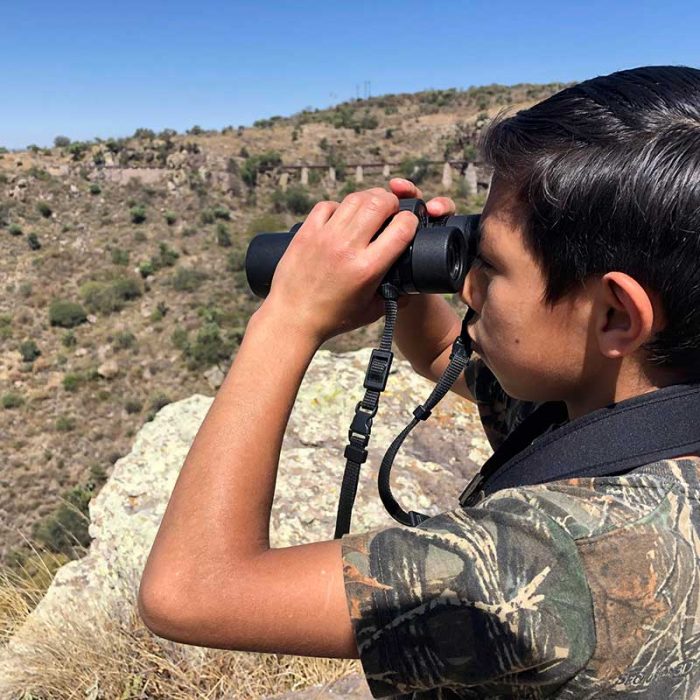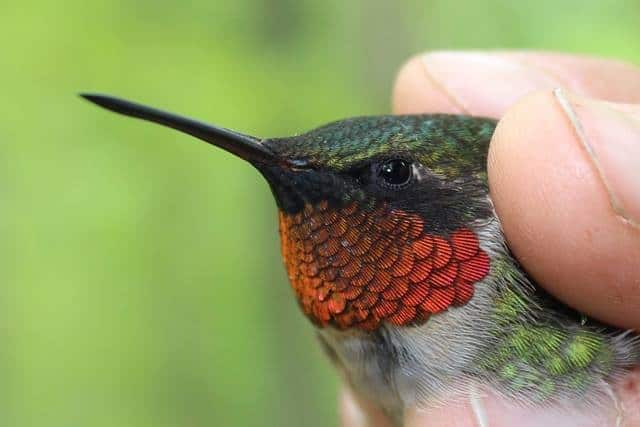Swainson’s Thrush. Photo by Sachi Schott
The second half of August began with windy, rainy weather to the delight of the gulls, who were the only ones out flying or swimming on the morning of August 16th. Even the Double-crested Cormorants preferred to stay huddled together on the sandbar at the end of the tip of Fish Point, and within the woods, Downy Woodpeckers, Northern Cardinals and House Wrens fluffed their feathers and preened as they tried to stay warm and dry.
Bird activity continued to be slow until August 18th, when north winds brought in migrants including a large number of Eastern Kingbirds, who stayed to hawk for insects over Fox Pond and the West Beach. Flycatcher species generally were common, including Least Flycatchers, Yellow-bellied Flycatchers, and Eastern Wood-pewees. Barn Swallows were also numerous as they gathered in flocks to make sallies across the lake. The wind shifted to the south on August 20th but didn’t slow down the Common Grackles, Red-winged Blackbirds, Yellow Warblers and swallow species that streamed over the tip of Fish Point on their way south. Although north winds are the best predictor of migration activity in the fall, south winds can also encourage migration as flying into the wind gives birds more lift and helps them to fly more efficiently as long as the wind isn’t too strong. Of course, when birds are truly determined to migrate, not even weather conditions that give humans pause can stop them! Such was the case on August 21st when the heavens opened and torrential rains poured forth halfway through the morning, forcing PIBO’s census taker to take shelter under the trees. The thunderstorm didn’t discourage the hundreds of Purple Martins that filled the sky and blanketed the trees along the beach. By the next day, they were almost all gone – only one Purple Martin was recorded on census August 22nd.
As PIBO eased into the daily routine of mist-netting, more warbler species began to show up on the list of species seen each day. Canada Warblers were some of the first to be captured, along with American Redstarts, Magnolia Warblers, Black-and-white Warblers, and Ovenbirds. Very few birds were captured each day – the highest single day’s banding total was fifteen birds, and as the temperature and humidity climbed the banding totals dwindled down to between two and five birds a day. Mixed flocks of warblers, Red-eyed Vireos and Baltimore Orioles were seen frequently on census and near the banding station, but they preferred to forage high up in the trees and did not condescend to come down to net-level. PIBO staff were forced to crane their necks and strain their eyes to the utmost to catch glimpses of the season’s first Tennessee, Myrtle, Golden-winged, Bay-breasted and Chestnut-sided Warblers, among others.
By August 29th temperatures were hot enough that it felt like the middle of summer and the hard rain that fell in the early afternoon came as a relief. The results of the cooler temperatures and north-west winds were immediate: there were noticeably more birds chipping and calling in the dark of the pre-dawn on August 30th as the PIBO staff walked in to start their day’s work. Six hours later, they had banded 41 birds and had observed a total of 67 species – an increase of twenty species over the day before! The Red-eyed Vireos and warblers had descended from the remote treetops and were now foraging closer to eye-level, making it much easier to spot the first Cape May and Black-throated Blue Warblers of the season. Some of the most numerous birds PIBO bands in the fall are thrushes of the genus Catharus, and while a few had been seen and banded since August 20th, their numbers increased dramatically on the 30th. The soft, whistling chirr-ups of Veerys and Swainson’s Thrushes sounded a note of gentle inquiry from within the dogwood trees in the netting area as PIBO staff went about their rounds, and the first Hermit Thrush of the season was captured. The banding station continued to be busy on August 31st, though the surrounding woods were quieter than the day before. On census, a Prairie Warbler was seen at Fish Point in a group of other warblers. This species is uncommon in Ontario, and this was an unusual and exciting official sighting for PIBO!
While PIBO’s mandate is the conservation and study of birds, we are occasionally contacted by people seeking aid for a bird in distress. PIBO staff do not have the formal training or resources for wildlife rehabilitation work, but in such cases, we do our best to see that the bird gets the help it needs.
On May 18th, the PIBO banding station was visited by Jon and Hanne Hettinga, two much-valued PIBO supporters). They had seen a Great-horned Owl on the ground next to the Fish Point trail, and were worried that it was in distress. PIBO’s Field Supervisor Sumiko Onishi accompanied them back to the owl and found it lying on a boggy patch of ground. It did not offer any resistance when she wrapped it in a towel and picked it up, and it remained quiet and docile while she brought it back to the PIBO cottage. In view of this unusual behaviour, it was decided that the owl should be taken to the Wings Wildlife Rehabilitation Center in Amherstburg, an organization that PIBO has sent injured birds to before. Through the Pelee Island Quarry Farmer’s Market, PIBO met Patricia Simone and Anna Morle, who generously volunteered to take the bird to the mainland with them. They saw it safely delivered to the rehabilitation centre later that day.
Sadly, in spite of the best efforts of the staff at Wings, the owl did not survive overnight. It was a young bird and the rehab staff speculate that may have starved through its lack of hunting experience. PIBO would like to extend its sincere thanks to everyone involved – Jon and Hanne Hettinga, Patricia Simone, Anna Morle, and the staff at the Wings Wildlife Rehabilitation Center. While the outcome was not what we had hoped for, we are extremely grateful for all of their help and hard work on behalf of this beautiful bird.
Great-horned Owl. Photo by Patricia Simone.








